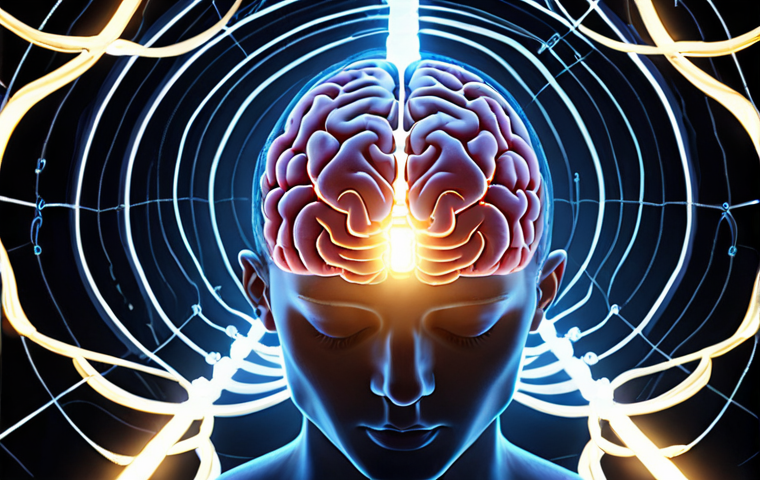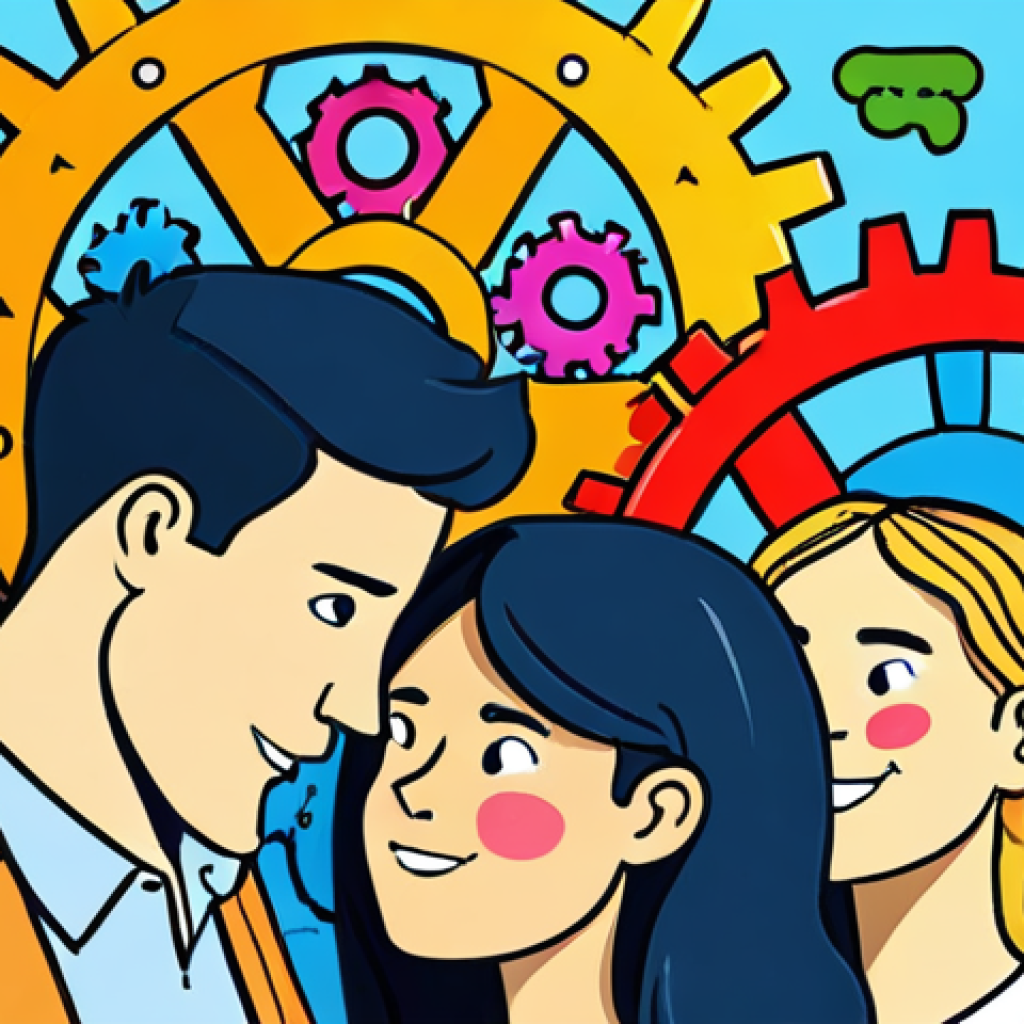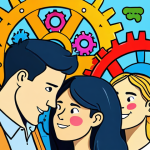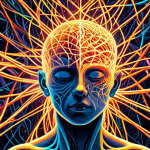Psychology, at its core, delves into the intricate workings of the human mind and behavior. It seeks to understand why we think, feel, and act the way we do, exploring everything from individual cognitive processes to complex social interactions.
Having spent countless hours pondering my own quirks and observing those around me, I’ve come to appreciate psychology’s power in illuminating the human experience.
The field has evolved dramatically, with emerging trends in areas like positive psychology and behavioral economics offering fresh perspectives on well-being and decision-making.
Experts predict that advancements in neuroimaging will further revolutionize our understanding of the brain, unlocking new insights into mental health and cognitive function.
So, let’s explore this fascinating subject more accurately in the article below!
Psychology, at its core, delves into the intricate workings of the human mind and behavior. It seeks to understand why we think, feel, and act the way we do, exploring everything from individual cognitive processes to complex social interactions.
Having spent countless hours pondering my own quirks and observing those around me, I’ve come to appreciate psychology’s power in illuminating the human experience.
The field has evolved dramatically, with emerging trends in areas like positive psychology and behavioral economics offering fresh perspectives on well-being and decision-making.
Experts predict that advancements in neuroimaging will further revolutionize our understanding of the brain, unlocking new insights into mental health and cognitive function.
So, let’s explore this fascinating subject more accurately in the article below!
Unraveling the Mystery of Cognitive Biases

Ever wonder why you make certain decisions, even when you know they might not be the best ones? Cognitive biases, those sneaky mental shortcuts, could be the culprit.
They’re like pre-programmed errors in our thinking that can lead us astray. I remember once falling for the availability heuristic big time. After seeing a news report about a shark attack, I was terrified to swim in the ocean for weeks, even though the statistical probability of such an event was incredibly low.
That’s the availability heuristic in action – letting easily recalled information (like that sensational news story) unduly influence my perception of risk.
It is truly amazing how our brains can trick us sometimes.
The Allure of Confirmation Bias
Confirmation bias is a real doozy. It’s our tendency to seek out and interpret information that confirms our existing beliefs, while conveniently ignoring anything that contradicts them.
I’ve seen this play out countless times in political discussions. People will latch onto news articles or studies that support their views, while dismissing anything that challenges them as “fake news.” It’s like living in an echo chamber where your opinions are constantly validated.
I personally try to fight this by actively reading opinions from sources I don’t usually agree with.
Anchoring Bias: Setting the Stage
Anchoring bias is another cognitive pitfall. It’s when we rely too heavily on the first piece of information we receive (the “anchor”) when making decisions.
For example, when negotiating the price of a car, the initial asking price often sets the stage for the rest of the negotiation, even if that initial price is completely unreasonable.
I once saw a study where people were asked to estimate the population of Chicago after first being asked if it was higher or lower than 10 million. Those who were asked about the 10 million figure gave significantly higher estimates than those who were asked if it was higher or lower than 1 million.
Crazy, right?
The Emotional Rollercoaster: Exploring the Psychology of Emotions
Emotions are the spice of life. They color our experiences, drive our actions, and shape our relationships. But what exactly are emotions, and why do we have them?
I think back to times of extreme joy, like when my daughter was born, or overwhelming sadness, like when I lost my grandfather. It’s fascinating how these emotions can completely consume us, both for good and for bad.
Understanding the psychology of emotions can give us valuable insights into ourselves and others.
Theories of Emotion: A Historical Perspective
Many theories attempt to explain how emotions arise. The James-Lange theory suggests that our bodies react first, and then we experience emotion based on those reactions.
So, we don’t run because we’re afraid, we’re afraid because we run. The Cannon-Bard theory, on the other hand, argues that physiological arousal and emotional experience occur simultaneously.
Personally, I find a blend of both theories makes the most sense.
The Impact of Emotions on Decision-Making
Emotions aren’t just feelings; they play a huge role in how we make decisions. Studies have shown that people in a positive mood tend to be more optimistic and take more risks, while those in a negative mood tend to be more cautious and risk-averse.
It’s like seeing the world through different colored lenses. I’ve definitely noticed this in my own life. When I’m feeling stressed, I tend to make more impulsive and short-sighted decisions.
Social Dynamics: Navigating the Complex World of Human Interaction
Humans are social creatures. We crave connection, and our lives are deeply intertwined with those of others. Social psychology explores how our thoughts, feelings, and behaviors are influenced by the presence of others.
I remember being fascinated by the Stanford prison experiment in college. It highlighted the powerful influence of social roles and situations on human behavior, even leading to extreme and unethical outcomes.
Conformity and Obedience: The Power of the Group
Conformity is the tendency to align our thoughts and behaviors with those of the group. Obedience is complying with the demands of an authority figure.
Both are powerful forces that can shape our actions, sometimes in surprising ways. The Milgram experiment, where participants were instructed to administer increasingly painful shocks to a “learner,” demonstrated the disturbing extent to which people will obey authority, even when it conflicts with their conscience.
Altruism and Helping Behavior: Why Do We Help?
Altruism is selfless concern for the well-being of others. It’s when we help someone without expecting anything in return. But why do we do it?
Some theories suggest that altruism is driven by empathy, the ability to understand and share the feelings of others. Others propose that it’s rooted in evolutionary biology, with helping behavior increasing the chances of survival for our genes.
I personally believe it is driven by a mix of empathy and a fundamental desire to do good.
The Realm of Mental Disorders: Understanding and Addressing Psychological Distress
Mental disorders are conditions that affect a person’s thinking, feeling, mood, or behavior. They can cause significant distress and impairment in daily life.
It’s crucial to remember that mental disorders are not signs of weakness or personal failings. They are complex medical conditions that can be treated effectively with a combination of therapy, medication, and support.
Anxiety Disorders: When Worry Becomes Overwhelming
Anxiety disorders are characterized by excessive worry, fear, and nervousness. Common types include generalized anxiety disorder, panic disorder, social anxiety disorder, and phobias.
I have known people who struggle daily to overcome crippling panic attacks. Seeing their everyday battles highlights the importance of accessible mental health care.
Mood Disorders: The Ups and Downs of Life
Mood disorders involve significant disturbances in mood, such as depression and bipolar disorder. Depression is characterized by persistent sadness, loss of interest in activities, and feelings of hopelessness.
Bipolar disorder involves alternating periods of mania (elevated mood and energy) and depression. It’s essential to approach these conversations with empathy and understanding.
Positive Psychology: Cultivating Happiness and Well-being
Positive psychology focuses on understanding the factors that contribute to happiness, well-being, and flourishing. It’s not just about treating mental illness; it’s about promoting mental wellness and helping people live their best lives.
I have seen so much benefit from integrating some of these principles into my own life, like gratitude journaling and practicing mindfulness.
The Science of Happiness: What Makes Us Happy?
Research in positive psychology has identified several key factors that contribute to happiness, including strong social relationships, a sense of purpose, gratitude, and mindfulness.
Money, surprisingly, has a limited impact on happiness beyond a certain point. It makes you wonder what’s truly important in the long run.
Practicing Gratitude and Mindfulness
Gratitude is the practice of appreciating the good things in our lives. Mindfulness is the practice of paying attention to the present moment without judgment.
Both can have a profound impact on our well-being. I personally keep a gratitude journal, and it’s amazing how much it shifts my perspective on even the toughest days.
The Brain’s Inner Workings: A Glimpse into Neuroscience
Neuroscience explores the structure and function of the brain and nervous system. It’s a rapidly advancing field that’s shedding light on the biological basis of behavior and mental processes.
The more we learn about the brain, the better we can understand ourselves.
Brain Structures and Their Functions
Different parts of the brain are responsible for different functions. The prefrontal cortex is involved in decision-making and planning, the amygdala is involved in processing emotions, and the hippocampus is involved in memory.
Every part plays a crucial role.
Neurotransmitters and Their Role in Behavior
Neurotransmitters are chemical messengers that transmit signals between neurons in the brain. They play a critical role in regulating mood, sleep, appetite, and other behaviors.
Serotonin, dopamine, and norepinephrine are just a few of the many neurotransmitters that influence our daily lives.
| Concept | Description | Example |
|---|---|---|
| Cognitive Bias | Systematic patterns of deviation from norm or rationality in judgment. | Confirmation bias: Seeking out information that confirms existing beliefs. |
| Emotional Intelligence | The ability to understand, use, and manage your own emotions in positive ways. | Being able to calm yourself down during a stressful situation. |
| Social Influence | The impact of other people’s opinions and actions on your own behavior. | Conforming to a group’s decision even if you personally disagree. |
| Mental Disorder | Conditions that affect a person’s thinking, feeling, mood, or behavior. | Anxiety disorder: Excessive worry and fear. |
| Neurotransmitter | Chemical messengers that transmit signals between neurons in the brain. | Serotonin: Regulates mood, sleep, and appetite. |
Psychology, at its core, delves into the intricate workings of the human mind and behavior. It seeks to understand why we think, feel, and act the way we do, exploring everything from individual cognitive processes to complex social interactions.
Having spent countless hours pondering my own quirks and observing those around me, I’ve come to appreciate psychology’s power in illuminating the human experience.
The field has evolved dramatically, with emerging trends in areas like positive psychology and behavioral economics offering fresh perspectives on well-being and decision-making.
Experts predict that advancements in neuroimaging will further revolutionize our understanding of the brain, unlocking new insights into mental health and cognitive function.
So, let’s explore this fascinating subject more accurately in the article below!
Unraveling the Mystery of Cognitive Biases
Ever wonder why you make certain decisions, even when you know they might not be the best ones? Cognitive biases, those sneaky mental shortcuts, could be the culprit. They’re like pre-programmed errors in our thinking that can lead us astray. I remember once falling for the availability heuristic big time. After seeing a news report about a shark attack, I was terrified to swim in the ocean for weeks, even though the statistical probability of such an event was incredibly low. That’s the availability heuristic in action – letting easily recalled information (like that sensational news story) unduly influence my perception of risk. It is truly amazing how our brains can trick us sometimes.
The Allure of Confirmation Bias
Confirmation bias is a real doozy. It’s our tendency to seek out and interpret information that confirms our existing beliefs, while conveniently ignoring anything that contradicts them. I’ve seen this play out countless times in political discussions. People will latch onto news articles or studies that support their views, while dismissing anything that challenges them as “fake news.” It’s like living in an echo chamber where your opinions are constantly validated. I personally try to fight this by actively reading opinions from sources I don’t usually agree with.
Anchoring Bias: Setting the Stage
Anchoring bias is another cognitive pitfall. It’s when we rely too heavily on the first piece of information we receive (the “anchor”) when making decisions. For example, when negotiating the price of a car, the initial asking price often sets the stage for the rest of the negotiation, even if that initial price is completely unreasonable. I once saw a study where people were asked to estimate the population of Chicago after first being asked if it was higher or lower than 10 million. Those who were asked about the 10 million figure gave significantly higher estimates than those who were asked if it was higher or lower than 1 million. Crazy, right?
The Emotional Rollercoaster: Exploring the Psychology of Emotions
Emotions are the spice of life. They color our experiences, drive our actions, and shape our relationships. But what exactly are emotions, and why do we have them? I think back to times of extreme joy, like when my daughter was born, or overwhelming sadness, like when I lost my grandfather. It’s fascinating how these emotions can completely consume us, both for good and for bad. Understanding the psychology of emotions can give us valuable insights into ourselves and others.
Theories of Emotion: A Historical Perspective
Many theories attempt to explain how emotions arise. The James-Lange theory suggests that our bodies react first, and then we experience emotion based on those reactions. So, we don’t run because we’re afraid, we’re afraid because we run. The Cannon-Bard theory, on the other hand, argues that physiological arousal and emotional experience occur simultaneously. Personally, I find a blend of both theories makes the most sense.
The Impact of Emotions on Decision-Making
Emotions aren’t just feelings; they play a huge role in how we make decisions. Studies have shown that people in a positive mood tend to be more optimistic and take more risks, while those in a negative mood tend to be more cautious and risk-averse. It’s like seeing the world through different colored lenses. I’ve definitely noticed this in my own life. When I’m feeling stressed, I tend to make more impulsive and short-sighted decisions.
Social Dynamics: Navigating the Complex World of Human Interaction
Humans are social creatures. We crave connection, and our lives are deeply intertwined with those of others. Social psychology explores how our thoughts, feelings, and behaviors are influenced by the presence of others. I remember being fascinated by the Stanford prison experiment in college. It highlighted the powerful influence of social roles and situations on human behavior, even leading to extreme and unethical outcomes.
Conformity and Obedience: The Power of the Group
Conformity is the tendency to align our thoughts and behaviors with those of the group. Obedience is complying with the demands of an authority figure. Both are powerful forces that can shape our actions, sometimes in surprising ways. The Milgram experiment, where participants were instructed to administer increasingly painful shocks to a “learner,” demonstrated the disturbing extent to which people will obey authority, even when it conflicts with their conscience.
Altruism and Helping Behavior: Why Do We Help?
Altruism is selfless concern for the well-being of others. It’s when we help someone without expecting anything in return. But why do we do it? Some theories suggest that altruism is driven by empathy, the ability to understand and share the feelings of others. Others propose that it’s rooted in evolutionary biology, with helping behavior increasing the chances of survival for our genes. I personally believe it is driven by a mix of empathy and a fundamental desire to do good.
The Realm of Mental Disorders: Understanding and Addressing Psychological Distress
Mental disorders are conditions that affect a person’s thinking, feeling, mood, or behavior. They can cause significant distress and impairment in daily life. It’s crucial to remember that mental disorders are not signs of weakness or personal failings. They are complex medical conditions that can be treated effectively with a combination of therapy, medication, and support.
Anxiety Disorders: When Worry Becomes Overwhelming
Anxiety disorders are characterized by excessive worry, fear, and nervousness. Common types include generalized anxiety disorder, panic disorder, social anxiety disorder, and phobias. I have known people who struggle daily to overcome crippling panic attacks. Seeing their everyday battles highlights the importance of accessible mental health care.
Mood Disorders: The Ups and Downs of Life
Mood disorders involve significant disturbances in mood, such as depression and bipolar disorder. Depression is characterized by persistent sadness, loss of interest in activities, and feelings of hopelessness. Bipolar disorder involves alternating periods of mania (elevated mood and energy) and depression. It’s essential to approach these conversations with empathy and understanding.
Positive Psychology: Cultivating Happiness and Well-being
Positive psychology focuses on understanding the factors that contribute to happiness, well-being, and flourishing. It’s not just about treating mental illness; it’s about promoting mental wellness and helping people live their best lives. I have seen so much benefit from integrating some of these principles into my own life, like gratitude journaling and practicing mindfulness.
The Science of Happiness: What Makes Us Happy?
Research in positive psychology has identified several key factors that contribute to happiness, including strong social relationships, a sense of purpose, gratitude, and mindfulness. Money, surprisingly, has a limited impact on happiness beyond a certain point. It makes you wonder what’s truly important in the long run.
Practicing Gratitude and Mindfulness
Gratitude is the practice of appreciating the good things in our lives. Mindfulness is the practice of paying attention to the present moment without judgment. Both can have a profound impact on our well-being. I personally keep a gratitude journal, and it’s amazing how much it shifts my perspective on even the toughest days.
The Brain’s Inner Workings: A Glimpse into Neuroscience
Neuroscience explores the structure and function of the brain and nervous system. It’s a rapidly advancing field that’s shedding light on the biological basis of behavior and mental processes. The more we learn about the brain, the better we can understand ourselves.
Brain Structures and Their Functions
Different parts of the brain are responsible for different functions. The prefrontal cortex is involved in decision-making and planning, the amygdala is involved in processing emotions, and the hippocampus is involved in memory. Every part plays a crucial role.
Neurotransmitters and Their Role in Behavior
Neurotransmitters are chemical messengers that transmit signals between neurons in the brain. They play a critical role in regulating mood, sleep, appetite, and other behaviors. Serotonin, dopamine, and norepinephrine are just a few of the many neurotransmitters that influence our daily lives.
| Concept | Description | Example |
|---|---|---|
| Cognitive Bias | Systematic patterns of deviation from norm or rationality in judgment. | Confirmation bias: Seeking out information that confirms existing beliefs. |
| Emotional Intelligence | The ability to understand, use, and manage your own emotions in positive ways. | Being able to calm yourself down during a stressful situation. |
| Social Influence | The impact of other people’s opinions and actions on your own behavior. | Conforming to a group’s decision even if you personally disagree. |
| Mental Disorder | Conditions that affect a person’s thinking, feeling, mood, or behavior. | Anxiety disorder: Excessive worry and fear. |
| Neurotransmitter | Chemical messengers that transmit signals between neurons in the brain. | Serotonin: Regulates mood, sleep, and appetite. |
In Conclusion
Exploring the vast landscape of psychology reveals the intricate layers of the human experience. From understanding our cognitive quirks to navigating the complexities of emotions and social dynamics, psychology offers invaluable insights. By embracing these insights, we can cultivate greater self-awareness, improve our relationships, and ultimately, live more fulfilling lives. It’s a journey of continuous learning and self-discovery, one that I believe is well worth embarking on.
Useful Information
1. Need to find a therapist? Psychology Today has a comprehensive directory of therapists near you in the US and Canada.
2. Looking to boost your mood? Try spending some time in nature, it’s a proven mood booster.
3. Want to improve your sleep? Establish a consistent sleep schedule and create a relaxing bedtime routine.
4. Feeling overwhelmed? Practice mindfulness meditation to calm your mind and reduce stress. Headspace and Calm are great apps to get started.
5. Interested in learning more about psychology? Check out the American Psychological Association (APA) website for articles, resources, and information on mental health.
Key Takeaways
Psychology offers a fascinating lens through which to understand the human mind and behavior. Cognitive biases can influence our decision-making, emotions shape our experiences, and social dynamics impact our interactions. Mental disorders are treatable conditions, and positive psychology offers tools for cultivating happiness and well-being. By embracing these key takeaways, we can gain valuable insights into ourselves and others, leading to more fulfilling and meaningful lives.
Frequently Asked Questions (FAQ) 📖
Q: I’ve always been curious, what’s the real-world application of psychology beyond therapy?
A: Oh, it’s way more expansive than just therapy! Think about advertising, for instance. Companies use psychological principles to understand consumer behavior and craft ads that really stick.
Then there’s human resources, where psychology helps with employee motivation, team building, and conflict resolution. Even in designing user-friendly websites or apps, the principles of cognitive psychology are applied to ensure ease of use and a satisfying user experience.
It’s practically everywhere you look! I remember once reading about how casinos subtly use psychological tricks to keep people playing longer – things like the near-miss effect and creating an environment with no clocks or windows.
Pretty fascinating, right?
Q: With so much information available online, how can I distinguish credible psychology resources from unreliable ones?
A: That’s a tricky one these days, isn’t it? I’d start by looking for sources that are backed by reputable institutions, like universities or professional organizations like the American Psychological Association (APA).
Peer-reviewed journals are generally a good bet too, although they can be a bit dense for casual reading. Be wary of websites that make sweeping claims or lack proper citations.
Look for authors who are experts in their field – credentials matter! I once fell for a sensational article about a “revolutionary” therapy that turned out to be complete bunk.
Ever since then, I’ve always cross-referenced information with multiple sources and checked for evidence-based research. It’s a bit more work, but definitely worth it for accurate info.
Q: With all the buzz around
A: I and mental health, how might technology like AI potentially impact the future of psychology and mental healthcare? A3: That’s a huge question, and honestly, it’s both exciting and a little unsettling!
On the one hand, AI could revolutionize mental healthcare by making it more accessible and affordable. Think AI-powered chatbots offering preliminary mental health support, or algorithms that can analyze vast amounts of data to identify patterns and predict risks.
It could be a game-changer for early intervention. However, there are also concerns about privacy, bias in algorithms, and the potential for dehumanizing the therapeutic process.
I read an article recently about how AI might struggle to understand the nuances of human emotion and context, which are so crucial in therapy. Personally, I believe AI can be a powerful tool, but it should always be used ethically and with a strong emphasis on human oversight and empathy.
It’s about augmenting, not replacing, human connection.
📚 References
Wikipedia Encyclopedia
구글 검색 결과
구글 검색 결과
구글 검색 결과
구글 검색 결과
구글 검색 결과



